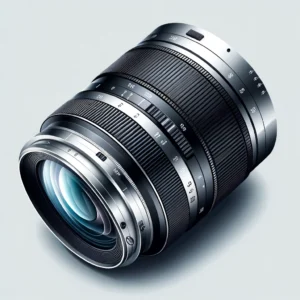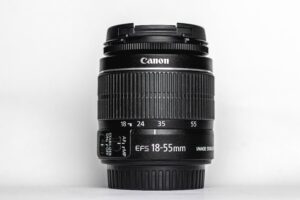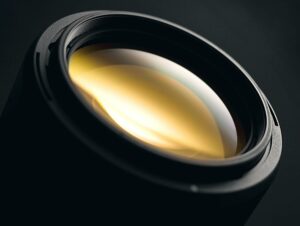“Should I buy used camera lenses?” is a question that many budding photographers ask. The short answer is yes, especially if you’re looking to strike a balance between cost and quality.
In this guide, we’ll explore the rising popularity of purchasing used lenses, the benefits they offer, and how to make an informed decision.
| Key Considerations | Details |
|---|---|
| Cost Efficiency | Used lenses often come at a fraction of the price of new ones, allowing for budget-friendly quality upgrades. |
| Environmental Impact | Buying used reduces waste and promotes sustainability, as it prevents functional lenses from ending up in landfills. |
| Access to Vintage Gear | Some lenses are no longer in production; the used market provides access to these unique, vintage models. |
| Inspection & Testing | Essential to ensure the lens is in good condition. Check for physical and optical issues, test its mechanics, and ensure clear communication with sellers. |
| Online vs. In-Person Purchases | Both have their pros and cons. Online offers variety and convenience, while in-person allows for tactile inspection and immediate testing. |
| Authenticity & Trustworthiness | Ensure the lens is genuine and the seller is reputable. Cross-checking serial numbers and seeking out platform/seller reviews can be helpful. |
| Maintenance & Care | Used lenses might require more frequent maintenance. Regular cleaning and addressing minor issues promptly can extend the lens’s lifespan. |
Why Consider Buying Used Camera Lenses?
The appeal of a shiny, brand-new lens is undeniable. But there’s a compelling case to be made for opting for a used lens. Here’s why:
1. Cost Savings and Budget Considerations
Purchasing a used lens can save you a significant amount of money compared to buying brand new. Especially for hobbyists or those on a tight budget, this can mean the difference between affording a high-quality lens or settling for a lesser quality new one.
2. Environmental Sustainability and Reducing Waste
Every used lens purchased is one less item in the landfill. It’s a small but impactful way to promote sustainability in the photography community. As someone who is passionate about sustainability, this is a huge plus.
3. Access to Vintage and Unique Lenses
Some lenses are no longer in production, making the used market the only place to find them. For photographers looking to achieve a specific, vintage look, used lenses can be a goldmine.
4. Achieving Professional Results Without Breaking the Bank
A well-maintained used lens can provide the same, if not better, results than a new lens. This means you can get professional-level shots without the professional-level price tag.
5. A Deep Dive into How Lenses Work
Understanding the intricacies of lenses can further inform your decision. For a detailed look into the mechanics and design of camera lenses, check out this comprehensive guide on how camera lenses work.
Essential Tips for Ensuring a Smart Purchase
Navigating the used lens market can be tricky, but with the right strategies, you can buy a quality lens that meets your needs. Here are some critical steps to follow:
1. Understanding the Seller
A good purchase starts with a trustworthy seller. Here’s how to assess their reliability:
- Check the Seller’s History and Reputation: Dive deep into reviews, ratings, and feedback. Past buyers’ experiences can give you a clear picture of what to expect.
- Identify Trustworthy Online Platforms and Stores: Not all platforms are created equal. Opt for ones with a solid return policy, clear product descriptions, and a system for vetting sellers. Remember, a good deal on a dubious platform is often too good to be true.
2. Inspecting the Lens
Once you’ve identified a potential lens, it’s time for a thorough inspection:
- Start with the Basics: Examine the lens body, mount, and glass for any visible damage. This can include dings, dents, or loose parts.
- Look for Signs of Mold, Haze, or Scratches: Mold can be a death sentence for a lens. Ensure the glass is clear and free of any fungus, haze, or deep scratches that can affect image quality.
- Mechanical Tests: Play around with the lens. Turn the focus rings, test the zoom, and ensure any stabilization features are functional. A lens should move smoothly without any hitches.
- Evaluate the Optical Condition: Beyond the visible issues, it’s essential to understand the lens’s optical performance. For a deeper understanding of what to look for, explore the intricacies of lens optics and their designs.
3. Practical Tests Before Buying
Before finalizing any purchase, hands-on testing is a must. Here’s how to ensure your potential new lens is up to par:
- The Need for Hands-On Testing: No matter how descriptive a listing might be, there’s no replacement for a direct interaction with the lens. It allows you to get a feel for its weight, build quality, and overall condition.
- Assessing Image Quality: Take some test shots to evaluate sharpness, chromatic aberration, and other optical issues. Zoom in on the images to inspect details. A lens in good condition should produce crisp, clear images without noticeable distortions.
- Examine the Aperture: The lens’s aperture is crucial for controlling light and depth of field. Ensure the aperture blades open and close smoothly and are free of oil or debris. A sticky or oily aperture can impact image quality.
- Engage with the Seller: Ask about the lens’s history, such as how often it was used, any past damages or repairs, and the reason for selling. Honest communication can provide insights into how well the lens was maintained.
4. Online Vs. In-Person Purchases
The digital age offers the convenience of online shopping, but when it comes to lenses, is it always the best option?
- Beware of Online Scams: The anonymity of the internet can sometimes shield unscrupulous sellers. Always check seller reviews and be wary of deals that seem too good to be true.
- Secure Payment Methods: When buying online, use trusted payment methods or platforms that offer buyer protection.
- Physical Inspection Advantages: While online shopping offers convenience, in-person purchases allow for immediate, hands-on inspections. You can test the lens on your camera, check for any undisclosed issues, and even negotiate the price.
- Online Convenience: If you’re confident in your ability to assess a lens based on its online description and the platform’s reliability, online purchases can be a great option. Plus, they offer a wider selection than local stores. However, always be sure you know how to care for your lens, especially when it arrives. For tips on cleaning and maintenance, check out this guide on how to clean a camera lens.
Where to Buy Used Camera Lenses in 2023
The market for used camera lenses is expansive, offering options for every type of photographer. Let’s explore the best places to buy used camera lenses in 2023:
Online Options
The digital marketplace has revolutionized the way we buy and sell. Here are some top platforms for securing used lenses:
- eBay: A vast marketplace where you can often find great deals. However, it requires careful vetting of sellers and listings.
- Amazon: Offers a mix of individual sellers and businesses. Their return policy can be beneficial for buyers.
- Adorama & B&H: Renowned for their photography gear, both new and used. They offer warranties on used items, providing an added layer of security.
- KEH Camera: Specializes in used photography gear and is known for its rigorous quality checks.
Safety First: Always ensure the platform has a secure payment system. Look for sites with buyer protection and clear return policies. If a lens doesn’t match its description or has hidden issues, you’ll want the option to return or exchange it. For more on potential lens issues and fixes, read here.
In-Person Options
For those who prefer a more traditional approach, there are plenty of places to explore:
- Flea Markets and Garage Sales: These can be gold mines for rare finds. While you might stumble upon a gem, it’s essential to have a keen eye and knowledge of what you’re looking for, as there’s often no return option.
- Local Camera Stores: Many stores offer used sections where they sell gear on consignment. Purchasing from a reputable store provides the assurance of quality and often a short-term warranty.
- Networking: Attend local photography meetups, workshops, or clubs. Building relationships with fellow photographers can open doors to private sales, swaps, or even rentals.
Avoiding Common Pitfalls
A great deal can sometimes blind us to potential red flags. However, with a little preparation and vigilance, you can avoid common pitfalls when purchasing used camera lenses:
1. Stay Informed on Market Prices
Before making a purchase, research the going rate for the lens model you’re interested in. This ensures you don’t overpay or get duped into thinking you’re getting a deal when you’re not.
2. Beware of Too-Good-To-Be-True Deals
If a deal seems too good to be true, it often is. Extremely low prices can be a sign of a scam, counterfeit products, or lenses with hidden defects.
3. Confirming Lens Authenticity
Counterfeit lenses can be a real problem. Always check serial numbers, branding, and any accompanying paperwork to confirm a lens’s authenticity.
4. Clear Communication with Sellers
Ask questions about the lens’s history, any known defects, and the reason for selling. Transparent communication can prevent misunderstandings and ensure you’re making an informed decision.
To understand the typical lifespan and wear pattern of lenses, delve into how and when camera lenses wear out.
Caring for Your Used Lens
Once you’ve secured your perfect lens, it’s crucial to care for it properly to ensure its longevity and optimal performance:
1. Cleaning Techniques
Regularly clean your lens with a soft, lint-free cloth to remove dust and fingerprints. For deeper cleans, consider lens cleaning solutions and brushes specifically designed for camera lenses.
2. Invest in Protective Gear
A good lens deserves good protection. Invest in sturdy cases, lens caps, and UV filters to shield your lens from potential damage. UV filters, in particular, can protect the front element from scratches, dust, and other hazards.
3. Address Issues Promptly
If you notice any issues, such as a loose element or a sticky focus ring, address them immediately. Minor problems can escalate into significant defects if left unattended. For insights on lens protection and its importance, refer to our guide the necessity of camera lens protectors here.
Conclusion
Buying used camera lenses can be as thrilling as capturing that perfect shot. It offers potential savings and the potential to find unique lenses. As we close-out this guide, let’s explore the key takeaways:
- Informed Decisions Lead to Great Finds: By understanding the seller, conducting thorough inspections, and staying updated on market prices, you can navigate the second-hand lens market with confidence.
- Balancing Benefits and Challenges: While there are undeniable benefits, such as cost savings and access to vintage lenses, challenges like potential scams or lens issues can arise. However, with vigilance and education, these challenges can be effectively managed.
- A Lifelong Learning Journey: The world of photography is vast and ever-changing. For those keen to explore further and learn more, understanding the role and importance of lens filters is a great next step.


![You are currently viewing Should I Buy Used Camera Lenses? Insights, Advice & Recommendations [2023]](https://photographyexplorer.com/wp-content/uploads/2023/08/Should-I-Buy-Used-Camera-Lenses.jpg)





